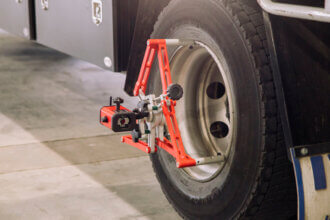Sleep apnea becomes a complex problem in truck society
Researchers believe that many US truck drivers suffer from sleep apnea. This problem is becoming a real threat to public safety.
According to the medical literature, sleep apnea is a breathing disorder that causes brief pauses in breathing during sleep. These pauses in breathing can last for about 10 seconds and can occur up to hundreds times a night, according to the Federal Motor Carrier Safety Administration. The result is inadequate sleep, fatigue, distracted attention.
It is also a huge problem for truck drivers due to the cost of sleep research and complaints from others that some cannot tolerate the most effective treatment – continuous positive airway pressure, or CPAP.
More common risk factors for sleep apnea identified by the Medical Review Board include:
• Hypertension (treated or untreated)
• Type 2 diabetes (treated or untreated)
• A man’s neck is over 17 inches or a woman’s neck is over 15.5 inches.
• History of stroke, coronary heart disease or arrhythmia
• Loud snoring
• Hypothyroidism (underactive thyroid, no treatment)
• A man aged 42 or older or a postmenopausal woman
“If you look at the number of drivers today, the typical truck driver is obese, over 40 and male, all risk factors for sleep apnea,” said Brian Morris, MD, who sits on the FMCSA Medical Review Board.
In the late 1990s, the Schneider safety team began an experiment to solve this annoying problem. First, they screened their drivers for “comorbidities” such as heart disease, diabetes, and gastrointestinal illness.
In 2006, the company launched a first-of-its-kind program to identify drivers at risk of sleep apnea, sending them to hospitals across the country for sleep studies and follow-up treatments – all for free.
“In our view, it was a win-win situation in every way,” said DiSalvi, vice president of security for Green Bay.
Over the years, Schneider’s sleep apnea program has continued to be a model in the fight against potentially life-threatening illnesses.
Last summer, the US Food and Drug Administration announced a voluntary recall by Philips Respironics Inc., a CPAP machine supplier based in Merrisville, Pennsylvania.
The masks were recalled due to the risk of exposure to harmful debris and chemicals, the company said.
The members of the medical review board wanted to convince the FMCSA to issue a formal rule-making act that would regulate and require medical examiners to follow strict protocols for testing drivers for apnea.
But it’s still in progress.
Last summer, the FMCSA said that instead of rulemaking, it is adding reference materials to the Medical Examiner’s Handbook, which was provided by the Medical Examiner’s Board, to help medical examiners through the review process.
The directory is being rewritten and was originally expected soon. In a statement to Transport Topics, the FMCSA said it is still under review and will not be made public until the end of 2022.
“We believe that all transport operators, not only in truck driving, but also in other modes of transport, should be screened and diagnosed and provided with adequate treatment if they have sleep apnea,” said Mary Pat McKay, chief medical officer of the National Council for transport safety.
McKay added that many truckers were worried they would be fired because of the diagnosis. But it’s not true. “The only time someone gets fired from a job because of a diagnosis of sleep apnea is in a fatigue-related accident.”
Rodolfo Giacoman, CVSA Fatigue Management Program Specialist, said a CVSA webinar on sleep apnea is scheduled for May 4th.




